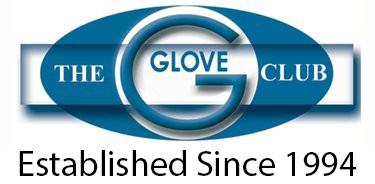We Make Your Online Business Visible
Everywhere!
Local Appeal - Nationwide Results
Platforms
WordPress
Facebook
Youtube
Linkedin
Intragram
X
Pinterest
Buy Me A Coffee
Chat GPT
Grok
Services
Digital Marketing
Search Engine Optimization
Social Media Management
Content Creation
Content Syndication
Website Hosting
Web Design
WooCommerce Store Setup
e-Commerce Development
WordPress Plugin Developers
What clients say about our work
Keith Ferris
Frome Acupuncture, Somerset
David Allen
Stone Floor Cleaning UK

Ali Ozdemir
Pacific Blue Mechanical, Vancouver

Lukasz Niebieszczanski
MCR Therapies, Preston

Glove Club
PPE Suppliers, UK

Maggi Pier
Local SEO Resources, Atlanta USA

Danielle Murrihy
Hello SEO, Australia
Blood Test
private Blood Testing, UK
SEO
Syndication
Digital Marketing
The Last Digital Marketing Agency You'll Ever Need
At EZi Gold, we're not just another digital marketing agency. We're your ultimate partner in navigating the complex and ever-evolving landscape of the digital marketplace. With a passion for innovation and a commitment to excellence, we've set out to redefine what it means to excel in the digital marketplace.
From stunning website designs to cutting-edge digital marketing plans, we've got you covered every step of the way. Our team of experts combines creativity with technical prowess to deliver results that surpass expectations and drive tangible growth for your business.
Digital Marketing Case Study Videos
What Sets Us Apart As A Digital Marketing Agency?
It's simple – our unwavering dedication to your success. We don't just aim to meet your goals; we strive to exceed them. By staying ahead of the curve and harnessing the latest technologies and trends, we ensure that your brand stays relevant and impactful in today's fast-paced digital landscape.
So say goodbye to the endless search for the right digital partner. With EZi Gold, you've found the last digital marketing agency you'll ever need. Let's embark on this journey together and unlock the full potential of your digital presence. Your success is our passion, and together, we'll make waves in the digital world like never before.
Our Marketing & Network Expertise
At EZi Gold, our expertise extends beyond just creating stunning digital assets. We pride ourselves on our deep understanding of network dynamics and the intricacies of effective marketing strategies. With years of experience under our belt, we've honed our skills in building and nurturing robust networks that drive engagement and foster lasting relationships.
Whether cultivating a loyal customer base or expanding your reach to new audiences, we know how to leverage networks to amplify your brand's voice and maximize your impact.”
But it doesn't stop there. Our digital marketing agency is second to none. From targeted social media campaigns to data-driven SEO strategies, we know what it takes to get your message in front of the right audience at the right time.
With a keen eye for analytics and a relentless drive for optimization, we continuously fine-tune our marketing efforts to ensure maximum effectiveness and return on investment. When you partner with Ezi Gold, you're not just getting a digital agency – you're gaining a trusted ally dedicated to elevating your brand above the noise and helping you achieve your marketing goals with precision and finesse.
We Look Forward To Hearing From You
Let's Take Your Business To The Next Level!
We are proud to work with these companies
Latest News & Articles
On-Page SEO in Blandford Forum for Small Business
On-Page SEO by Ezi Gold Marketing, SEO & Digital Marketing Experts Serving Blandford Forum and Dorset for over 30 years. Ezi Gold offer specialised insights into on-page SEO techniques that enhance local business visibility and drive targeted traffic. Maximising the Value of On-Page SEO for Local Businesses in Blandford Forum What Exactly Is On-Page SEO?…
Learn MoreInstagram Marketing in Bridgwater for Small Business
Instagram Marketing by Ezi Gold Marketing, SEO & Digital Marketing Experts Serving Bridgwater and Somerset for over 30 years. Ezi Gold offers specialised insights to maximise Instagram marketing potential for small businesses. Maximise Your Instagram Marketing Potential in Bridgwater Understanding the Essentials of Instagram Marketing Instagram Marketing in Bridgwater for Small Business: Instagram marketing is the…
Learn More5 SEO Hacks for Local Businesses in 2025
5 SEO Hacks by Ezi Gold Marketing, SEO & Digital Marketing Experts Serving Somerset and surrounding areas for over 30 years. Ezi Gold offers expert insights into SEO strategies tailored for local businesses, enhancing online visibility in 2025. Unlocking the Future of SEO: Key Strategies for 2025 5 SEO Hacks: In 2025, SEO has undergone…
Learn MoreCopywriting in Ferndown for Small Business: Boost Your Brand
Copywriting by Ezi Gold Marketing, SEO & Digital Marketing Experts Serving Ferndown and Dorset for over 30 years. Ezi Gold offers specialised insights into local copywriting strategies that enhance small business engagement and community connection in Ferndown. Understanding the Significance of Local Copywriting for Small Enterprises Why Tailored Copy is Essential for Businesses in Ferndown…
Learn More